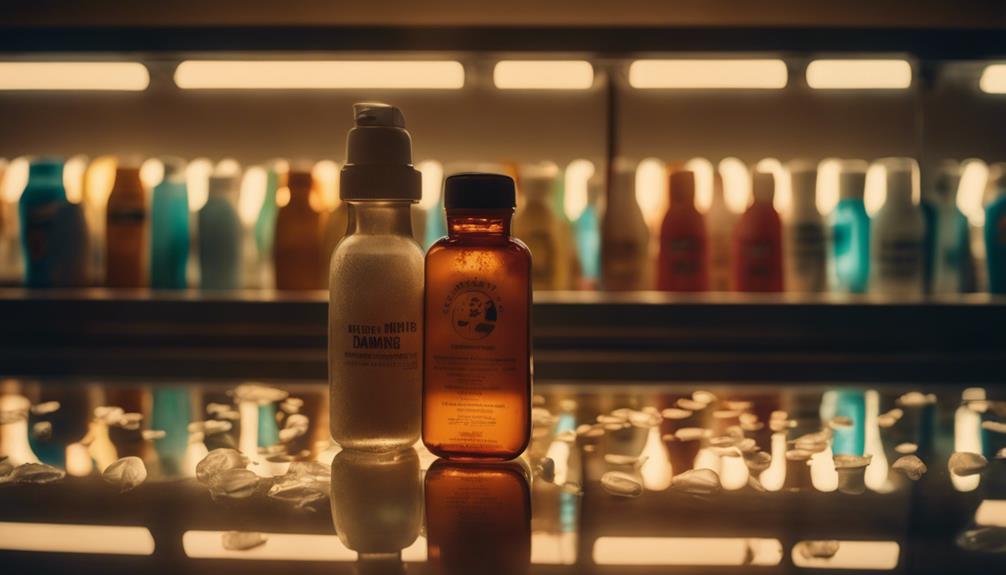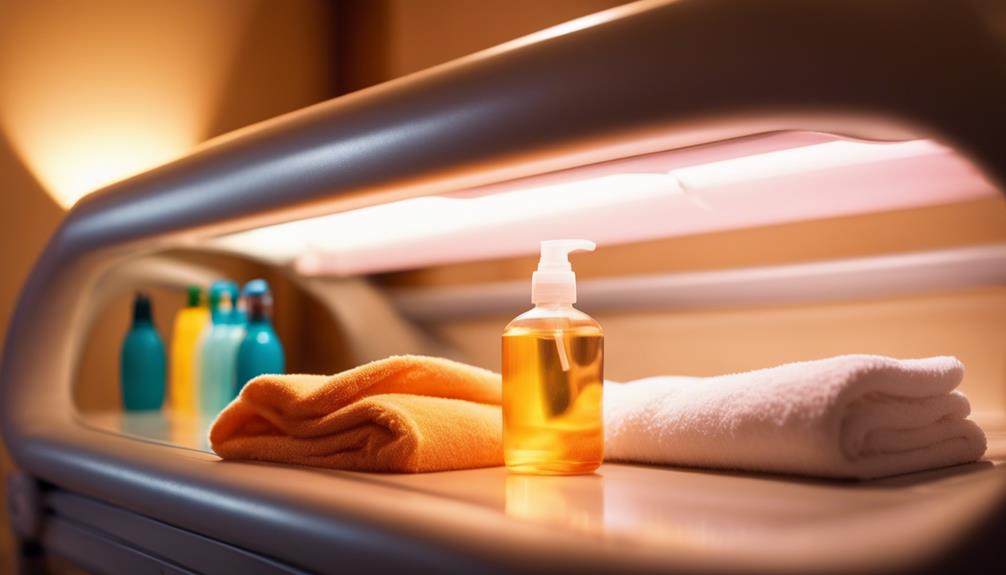So, you're torn between stand-up and lay-down tanning beds? No worries! Stand-up beds are like the speedy superhero of tanning—they give you that even glow quick, with less pressure on your skin. Plus, you can multitask while getting your tan! On the flip side, lay-down beds are pure chill mode, offering a cozy spa vibe where you can kick back and unwind. They're perfect for long sessions if you're in the mood to daydream. Ultimately, it's all about what feels good for you. Stick around, and you'll get the scoop on picking the perfect tanning experience!
Key Takeaways
- Stand-up tanning beds provide quicker sessions with even coverage, making them ideal for those with busy schedules.
- Lay-down tanning beds offer a comfortable, relaxing experience, perfect for those looking to unwind while achieving a tan.
- Stand-up beds minimize skin irritation and reduce the chance of tan lines, promoting a uniform bronzed glow.
- Lay-down options are great for daydreaming and enjoying a spa-like vibe during tanning sessions.
Overview of Tanning Bed Types
When it comes to tanning beds, you can choose between stand-up and lay-down options, each tailored to fit different preferences and needs.
If you're in a hurry and want to multitask, the stand-up beds might be your jam! They give you an even tan without those awkward pressure points.
But, if you're looking for a cozy, spa-like experience, lay-down beds are perfect for lounging. You can kick back, relax, and soak in those UV rays like you're on a beach vacation.
Both types work well for achieving that bronzed glow we all want, but it really comes down to what you enjoy more.
Benefits of Stand-Up Tanning

Stand-up tanning offers a fast and efficient way to achieve an even, bronzed look while minimizing discomfort and pressure points.
You'll love how quick and easy it is!
Why stand-up tanning rocks:
- Speedy Sessions: You'll get a beautiful glow in less time compared to lay-down tanning. Who doesn't love saving time?
- Even Coverage: No awkward positions needed! You're fully exposed to those glorious UV rays, ensuring a uniform tan.
- Less Skin Irritation: The design helps reduce any pesky tan lines or irritation. Your skin will thank you.
- Multitasking Friendly: You can even chat or listen to music while tanning. Talk about a productive glow-up!
Advantages of Lay-Down Tanning

Lay-down tanning consistently provides a comfortable and relaxing experience, making it perfect for those who enjoy unwinding while achieving a beautiful tan.
Imagine lying back, soaking up those gentle UV rays, and feeling all your stress melt away. Who wouldn't want that? It's like a mini-vacation without having to pack a suitcase!
Plus, you'll appreciate the way lay-down beds reduce pressure points, so you won't feel sore afterward. You can even close your eyes and daydream while still getting that gorgeous glow.
And let's be honest—there's something comforting about lying down that just feels right. So, if you're all about that chill vibe while getting a tan, lay-down tanning might just be your perfect match!
Choosing Products and Techniques

Selecting the right bronzer lotion is essential for achieving your desired tan intensity and ensuring compatibility with your chosen tanning bed. You want to look golden, not like a carrot, right? Here are some tips to help you choose wisely:
- Match your bronzer to your skin type—dry skin loves extra moisture!
- Go for fast-acting bronzers if you're short on time; nobody likes waiting around.
- Check if your lotion works well with stand-up or lay-down beds; they can be picky!
- Don't hesitate to ask spa experts for advice; they know their stuff and love to help.
With the right products and techniques, you'll be rocking that sun-kissed glow in no time!
Happy tanning!
Effectiveness and Trends in Tanning

When it comes to tanning effectiveness, personal comfort and desired outcomes play a crucial role in choosing between different bed types.
You might love the quick sessions in a stand-up bed, getting that even glow without the hassle of shifting positions. Plus, you won't have to worry about annoying tan lines!
On the other hand, if you're in the mood to relax, lay-down beds offer a cozy vibe that feels like a mini spa day. They might take a bit longer, but hey, who doesn't deserve a little pampering?
Just remember to keep up with trends like using proper tanning goggles and face covers for safety. It's all about finding what works best for you while enjoying the process!
Frequently Asked Questions
How Often Should I Use Tanning Beds for Best Results?
To achieve the best results, you should use tanning beds about two to three times a week, gradually increasing sessions. Always monitor your skin's response and take breaks to prevent overexposure and irritation.
Are There Any Skin Conditions That Prevent Tanning Bed Use?
Did you know that about 1 in 5 Americans develop skin cancer by age 70? If you have skin conditions like eczema or psoriasis, you should avoid tanning beds, as they can worsen your symptoms.
What Safety Precautions Should I Take Before Tanning?
Before tanning, you should apply sunscreen, wear protective goggles, and limit your exposure time. Check your skin for any irritations, stay hydrated, and consult with a professional if you have concerns regarding skin sensitivity.
Can I Tan Indoors if I Have a Sunburn?
Did you know 70% of people ignore sunburn signs? If you've got a sunburn, it's best to avoid indoor tanning. Your skin needs time to heal, and tanning could worsen the irritation and damage.
How Do I Maintain My Tan After Using a Tanning Bed?
To maintain your tan after using a tanning bed, moisturize daily, avoid long showers, and consider using a tan extender. Staying hydrated and protecting your skin from excessive sun exposure will also help prolong your glow.
Conclusion
So, whether you're hitting the stand-up bed for a quick bronze before your big date or lounging in a lay-down bed like you're at a tropical resort, it's all about what fits your vibe.
Imagine this: you've got a busy schedule, and just 10 minutes in a stand-up bed gives you that golden glow in no time.
But if you wanna kick back and chill, a lay-down bed's perfect for that spa day feel.
You do you!









